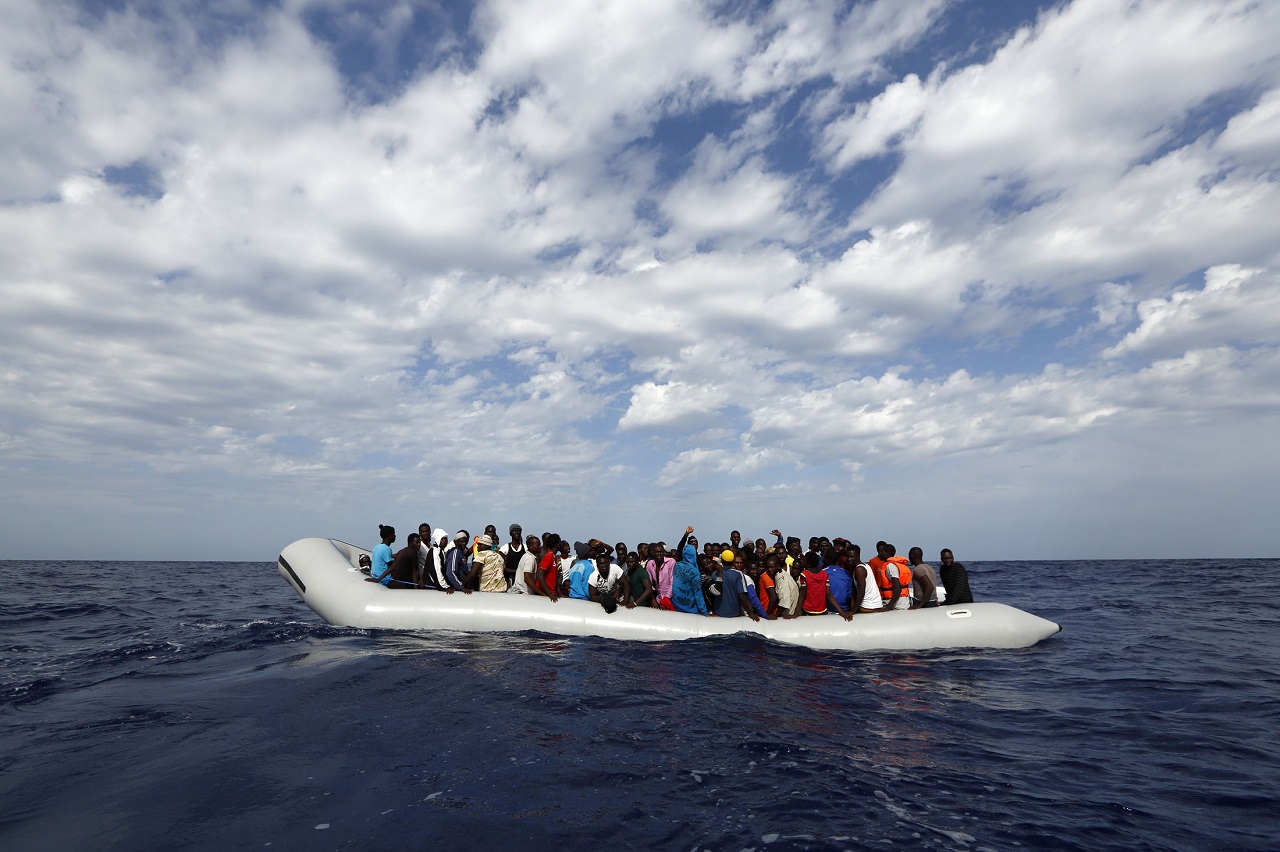Europe has neither taken responsibility or devised a plan to redress the Mediterranean migrant crisis, argues Alexandria Innes.
Even before Sunday’s tragedy, the Mediterranean had been acknowledged as the most dangerous peacetime border in the world. The number of boat deaths in the Mediterranean has escalated massively, with deaths in the first period of 2015 more than 30 times higher than the same period of 2014 according to the International Organisation for Migration.
It appeared, for a while, following the disaster of April 19th, that Europe was finally going to take this seriously and start to bear some responsibility for the deaths. That however, doesn’t appear to be the case. EU level talks have drawn two disappointing (and I would argue nonsensical) conclusions. 1. The EU will target traffickers by destroying boats before they can be used, thus bringing military violence to a place already fraught with different types of violence and 2. The EU will only accept 5000 people – and will return everybody else whence they came. When you think last year 150000 people arrived, and we know this year’s numbers are considerably higher, that means a lot of returns — without considering the fact that people will probably attempt to make the journey as many times as it takes.
There has been no acknowledgement of Europe’s own responsibility in creating a scenario where such deaths are likely to happen, and no acknowledgement that the people who are desperate enough to risk their lives might have a compelling reason for fleeing. Leaving one’s country due to persecution based on race, religion, nationality, membership of a particular social group or political opinion is protected under the 1951 Refugee Convention. Returning people who fulfil that definition is illegal under international refugee obligations.
Europe maintains a ‘blacklist’ of countries that are known for sending high numbers of asylum seekers according to the Common Consular Instructions, which prescribe common procedures for allocating visas. The countries that face the highest number of restrictions are Afghanistan, Bangladesh, DRC, Eritrea, Ethiopia, Ghana, Iran, Iraq, Nigeria, Pakistan, Somalia, Sri Lanka. These are also some of the major senders of asylum seekers. Furthermore, as the number of people fleeing the conflict in Syria has grown, so too have the restrictions on travel. For example, the UK now refuses to accept any transit visa held by a Syrian to allow them to travel through the UK en route to a different destination. Instead Syrians must apply for a UK visa even if they do not intend to leave the airport. And the UK refuses a massive 60% of those visas – climbing from a 30% refusal rate at the beginning of the conflict and demonstrating a reluctance to accept asylum seekers and refugees. This is basically a manipulation of the law and of legal interpretation in order for the UK to evade international responsibilities (evading these responsibilities is not without precedent in the UK, which accepts a shameful 750 refugees per year compared to Germany’s 5000, Sweden’s 2500 or Australia’s and Canada’s 10000 apiece). What this ultimately does is force desperate people to get into dangerous boats, risk their lives and, too often, die.
Asylum seekers and refugees are understood to be forced migrants. People who have been compelled to move for reasons outside of their control. When European states construct legal restrictions to prevent legal movement, people who are compelled to move for reasons outside of their control do not then simply not move. They move in other ways. European immigration restrictions that are designed to stymie the number of people who can travel to Europe, specifically the number who can seek asylum in Europe, have created the need for people to pay smugglers and traffickers to find them passage. This might be an inconvenient truth, but it’s nevertheless a simple logic puzzle, based on supply and demand.
Thus, the proposed means of preventing the boats by destroying the boats works just like border restrictions: it doesn’t solve the problem, it re-routes it. The Mediterranean coast is long. The boats will just move to new spots, probably making more difficult and more dangerous crossings. This same process has already been seen on the US border where between 1997 and 2005 migrants deaths rose exponentially while border enforcement strengthened correspondingly. As border enforcement increased yet nothing was done to address the need to migrate, the routes changed, becoming ever more dangerous and resulting in more death (For example, see Joseph Nevins ‘Dying for a Cup of Coffee? Migrant Deaths in the US-Mexico Border Region in a Neoliberal Age’ Geopolitics 12, 2007). Even so, the numbers pale in comparison to deaths in the Mediterranean.
The European reaction seems to be simple brute force. It is using a formula of supposed push and pull factors to determine what causes people to move without acknowledging the diverse experiences and the basic human difference in how one might respond to any so-called push and pull factors. The assumption seems to be that if migration is made difficult enough, people will not migrate. That completely undermines the idea that any migrants are forced. Furthermore, the assumption that making things difficult will stop migration has been disproven by the difficulties desperate people are willing to undergo time and time again. Yet, Fabrice Leggeri, executive director of Frontex stated: ‘saving migrants’ lives should not be the priority’. In my opinion, that attitude is abundantly clear and ought to be strongly condemned.
Alexandria Innes is Lecturer in International Relations at the University of East Anglia. Alexandria’s current research is at the intersection of human rights and security studies, focusing on how people who do not have citizenship or immigration status experience international relations. Her work has appeared in International Relations, Global Society and the Routledge Interventions series. She is the author of Migration, Citizenship and the Challenge for Security.
Image credit: Wikipedia





